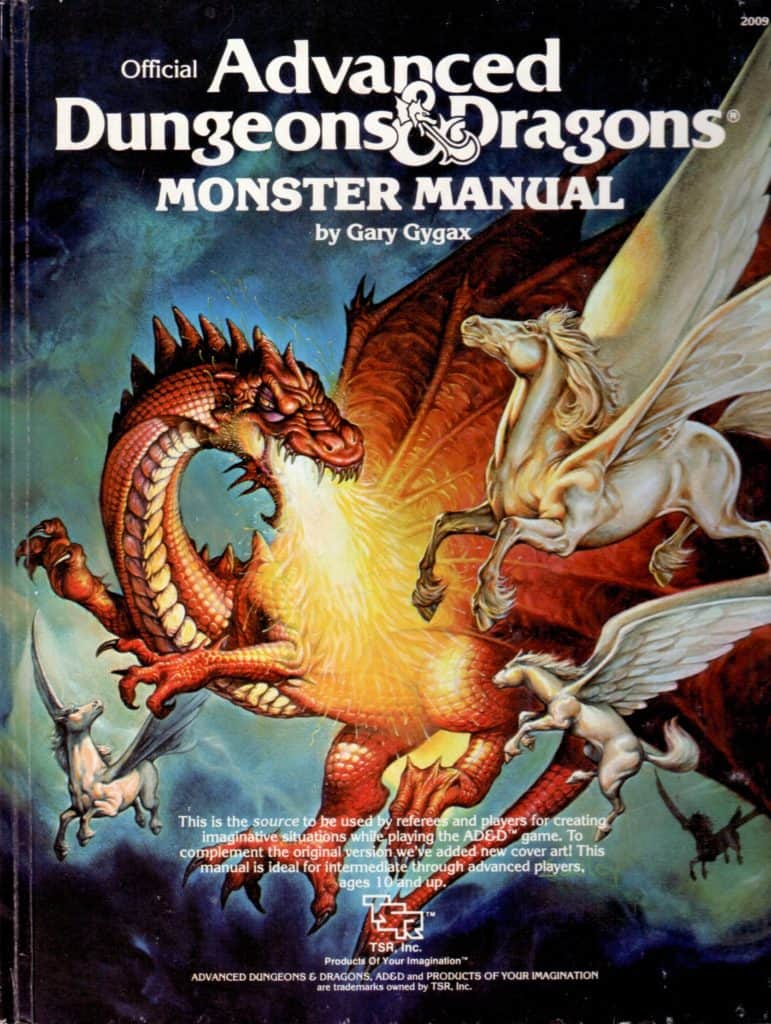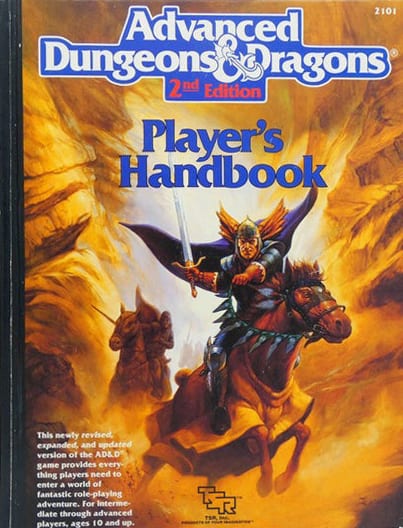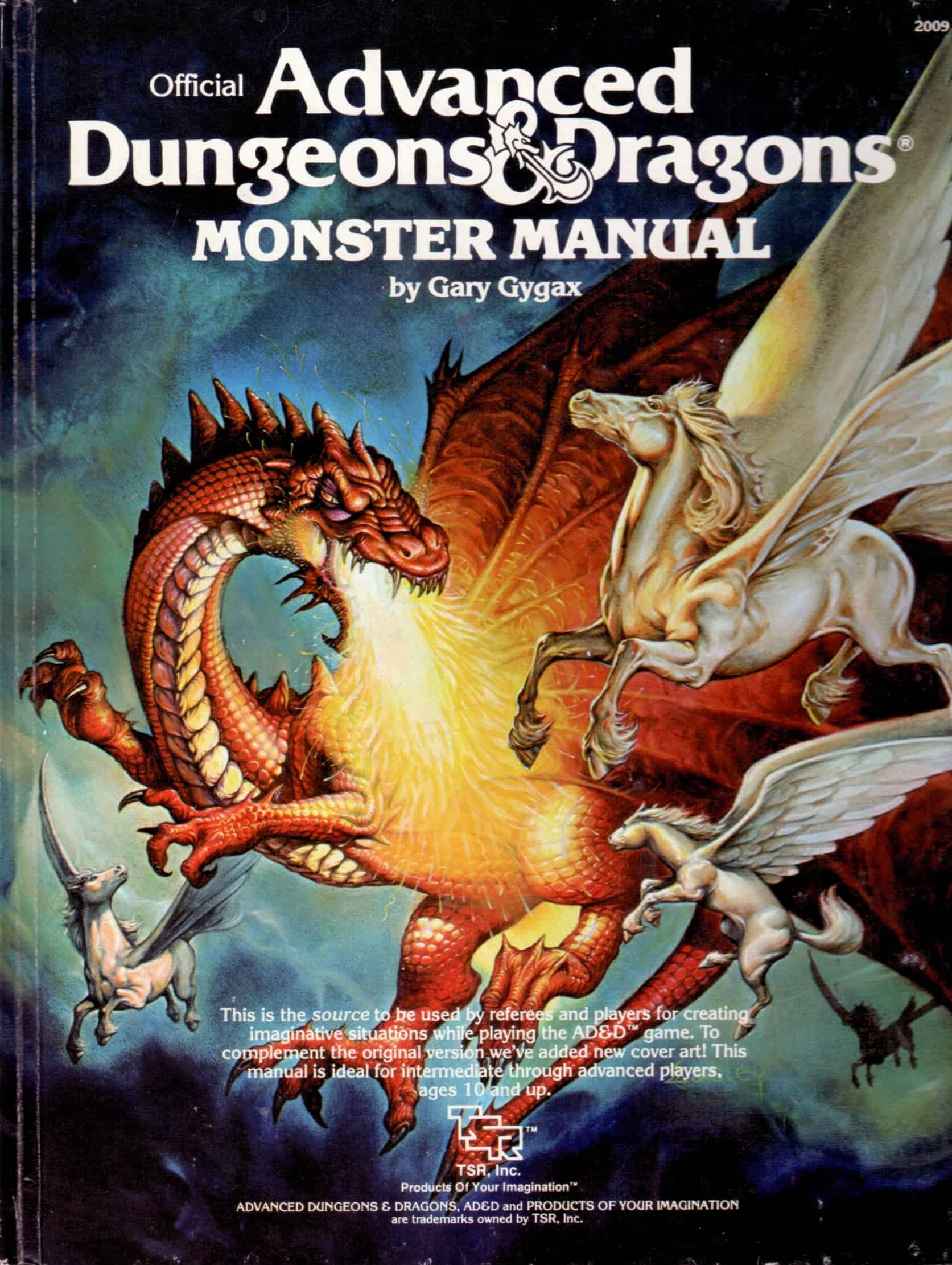As TSR continued its dominance of the table-top roleplaying genre, it found itself dealing with a few problems at once. Advanced Dungeons and Dragons was popular, but it required a great deal of support while still managing to alienate some players. The outside media was also providing a great deal of attention to the morality of Dungeons and Dragons, something that had always been outside the mainstream. The company was even dealing with the end of its relationship with founder Gary Gygax, leaving it without the guiding voice that had made D&D what it was. When all these factors came together, only one way forward was possible – the release of a new version of the game, Advanced Dungeons and Dragons 2nd Edition.
A Brief History of AD&D
Advanced Dungeons and Dragons 2nd Edition is one of the longest-running versions of the game, staying in some form of publication for thirteen years. It was designed by Zeb Cook and his team from TSR, taking a great deal of inspiration not only from the previous edition of Advanced Dungeons and Dragons but also the original version of the game. It was a calculated attempt to clean up the reputation of the game while still providing a logical successor to the ideas and themes of the original. Advanced Dungeons and Dragons 2nd Edition would manage to be significantly successful, though some of the publishing choices involved with the line would eventually spell the end of TSR.
In many ways, Advance Dungeons and Dragons 2nd Edition would also be the beginning of a new era for D&D. This was the first edition of the game created without the direct input of the original designers of the game and the first to be based more off of a revised rule-set than off of the original publications. D&D would no longer be the spin-off of a war game, but rather be a game that would continue to iterate on the same basic ideas for decades to come.
Dealing with Controversy
AD&D was published at one of the most contentious times for table-top gaming. Dungeons and Dragons had been all over the media, but not in a good way. It was portrayed as an occult past-time that would lead young people astray and that was the root cause of several high-profile crimes. The game’s moral ambiguity and dark imagery certainly didn’t help matters, and that was starting to impact the bottom line of the product. As such, TSR had to make a decision on how to proceed. Rather than fighting against the tide, the decision was made to make major tonal revamps to the way the game was perceived.
AD&D absolutely had a more moral bent than its predecessors did. Players were encouraged to play heroic characters in stories that had more simple themes of good versus evil. Anything that could be considered morally ambiguous (or downright evil) would be removed from the game, costing the game classes like the Assassin and races like the Half-Orc. This was as close as D&D would ever come to being scrubbed clean for mass approval, a move that both took some of the flavor from the game but helped to keep it afloat for another decade.

Moving Without the Master
One of the most interesting things about the second edition rule-set is that it was written without Gary Gygax. By the time that the rule-set was developed, Gygax had been gone for about a year. Despite the fact that AD&D seemed to be Gygax’s preferred version of how the game should continue to work, this particular iteration of the game was developed over the course of two years by a completely separate team at TSR. For the first time the lineage of D&D would continue on without Gygax’s input.
Try my AI Tabletop RPG generators...and an extensive library of content!
What’s interesting to note is that Gygax also viewed the first edition of AD&D as something that had fundamental issues. He had his own plans for a second edition of the game, which likely would have incorporated much of the errata and extra articles that were published after the original books went to print. It’s hard to say exactly how different Gygax’s version of second edition would have been, though takign a look at some of the other products he was involved with after D&D probably suggests that it wouldn’t be similar to what finally ended up being published.
The Game
Advanced Dungeons and Dragons 2nd Edition was something new for Dungeons and Dragons. For the first time, D&D would have a major rules change that didn’t necessarily require a full rebranding of the game. It would keep the name, but change up what didn’t work about the original version of Advanced Dungeons and Dragons, theoretically helping to usher AD&D’s fanbase to the next game without further diluting the brand in the market. Doing this meant making some major changes to how the game worked without really changing much of the philosophy being the game. If the move from OD&D to AD&D was a matter of recapturing the soul of the game, this was a matter of recapturing the spirit.
In some ways, the move to 2nd Edition was just as big as the move away from the original rule set. In fact, this is the game that really set up the idea of each iteration of Dungeons and Dragons as being a major shift towards a new play-style. Without 2nd Edition, it’s hard to see the game making the kinds of leaps that have both energized and split the player-base over the last few decades.
Rewriting the Rules

On a basic level, one can look at the rule changes in 2nd Edition as a method of expressing the OD&D rules as clearly as possible. Many of the changes made during this time, including the addition of new combat rules, would replace some of the ideas brought about in the original version of the game but would still express very similar ideas. The game also made a huge jump forward in moving from being miniature-based war-gaming spin-off to something that was more based on the theater of the mind, with minor changes like spell distances being measured in feet rather than inches.
⚔️ Fantasy RPG Random Tables Books
Make life as a Gamemaster easier…
If you play Dungeons & Dragons, Pathfinder, or other fantasy RPGs, this
RPG random tables series
is packed with encounters, NPCs, treasure, and more. Available in eBook or print—either way, you’ll have a wealth of adventure ideas at your fingertips.
At the same time, this game also saw rule changes that made it easier to play the game for longer periods of time. Many restrictions on player levels were removed or raised, while ideas like proficiencies would be included in the main line books. Classes also got a good bit of reorganization, with a few necessary renames, a few classes cut from the overall game, and the general group of the classes into larger archetypes. While these changes might seem cosmetic, they did help players to better understand what their characters’ roles were supposed to be in a party.
Taken together, the new rules represented a new philosophy of design. Rather than necessarily sticking to the war-gaming roots from which Dungeons and Dragons had come, the game was now catering to a population that was more familiar with role-playing. It was now possible to hold on to characters and to see them grow over the course of years, with constant content being published to ensure that the same character sheet could survive numerous adventures.
Player’s Options
By far one of the strangest choices TSR ever made for Dungeons and Dragons was the release of the Player’s Options books. While TSR had previously had no problem with having two different sets of rules out in the world under two different names, the Player’s Options books actually set up a totally alternate set of rules while still retaining the AD&D name. Player’s Options gave players a number of alternate ways to play the game, including new ways to create characters and new ways to conduct combat. In theory, this should have split the player base even more than the split between the two product lines.
Oddly enough, though, the Player’s Options books ended up being a solid bridge between the second and third editions of the game. It was in Player’s Options that the idea of point-buy character creation was introduced, something that’s become the standard for current iterations of the game. These books also introduced more tactical combat ideas like Attacks of Opportunity, which have become a major part of how combat works in the newer iterations. While Player’s Options may not have been the main line of the game, the books arguably introduced players to some of the most important future concepts of D&D.
The Cutting Room
There’s actually quite a bit from AD&D that wouldn’t end up making the jump to the next edition of the game. AD&D 2nd Edition is a time-capsule of late 80s role-playing tropes, with a last gasp of complicated math in Dungeons and Dragons being high among the issues that would have to get smoothed out in the game’s next iteration. This was the edition of the game with the notorious THAC0 (To Hit Armor Class 0) calculations, one in which lower armor scores were actually better than higher scores. This, alongside dozens of other smaller rules that went against common sense, would end up being left behind.
Also cut from this edition would be a few publishing strategies. The original version of the Monster Manual actually came in a binder that could be supplemented with future pages. This was actually a fairly cost-effective idea for players, but it didn’t end up working quite as well as the books. Publishing in general would be severely cut down for the next iteration of the game, with material slowly starting to move onto the internet in addition to being found in published materials.
It should also be noted that 2nd Edition would be the last version of the game to have to deal with being under the watchful eye of moral guardians. By the time 2nd Edition’s run was done, Dungeons and Dragons had moved even farther out of the spotlight. As such, the game’s focus on heroic role-play and the cutting of major classes and races would be undone in the next version of the game.
Reaction
Players and critics alike both had largely positive reactions to 2nd Edition. Though the game itself was just another iteration on Dungeons and Dragons, it felt like a major step up from what had been produced before. While there were certainly individuals who didn’t love the new moral stance or the removal of certain content, the game was wildly successful and still has fans to this day. This is a version of D&D that really took the original rules and spirit to its logical conclusion, becoming both the best expression of the original game as well as the final chapter in the history of a company.
Player reaction certainly cooled to the game over time, though. This iteration of the game faced a great deal of competition from other games that had learned quite a bit from Dungeons and Dragons. The dropping of the complex moral themes and evil characters certainly led to the development of game lines like White Wolf’s World of Darkness, while the assumption that players could handle somewhat complex math and equations to determine player actions definitely helped to provide more support for lines like GURPS.
AD&D 2nd Edition helped to firmly entrench tabletop role-playing games in its current niche. While it was certainly very popular and it had a number of fans, it also proved that even nods towards mainstream acceptability wouldn’t break Dungeons and Dragons out of its role as a niche hobby. With that said, the popular reaction to the game also ensured that the niche would remain viable for years to come.
Legacy
The legacy of 2nd Edition is profound to say the least. For thirteen years, this was the premier role-playing game on the planet. It helped to spawn dozens of imitators and also managed to be the version of the game that broke through into other forms of media. Games like Baldur’s Gate and Icewind Dale are both classics and are both based off of 2nd Edition. The game meant so much that it Dungeons and Dragon’s current lineage is based directly off this game. While other games might have laid the foundation, this is the game that really provided the hook for future growth.
⚔️ Fantasy RPG Random Tables Books
Make life as a Gamemaster easier…
If you play Dungeons & Dragons, Pathfinder, or other fantasy RPGs, this
RPG random tables series
is packed with encounters, NPCs, treasure, and more. Available in eBook or print—either way, you’ll have a wealth of adventure ideas at your fingertips.
Advanced Dungeons and Dragons 2nd Edition is an imperfect game that was built as much through outside pressures as it was through design choices. Nevertheless, it redefined the way that Dungeons and Dragons worked and ensured that the game would have a future. While radical redesigns would come after this version of the game, the DNA of D&D is really based off of 2nd Edition. There’s no better legacy than the fact that the future games would all consider themselves heirs of this edition.










